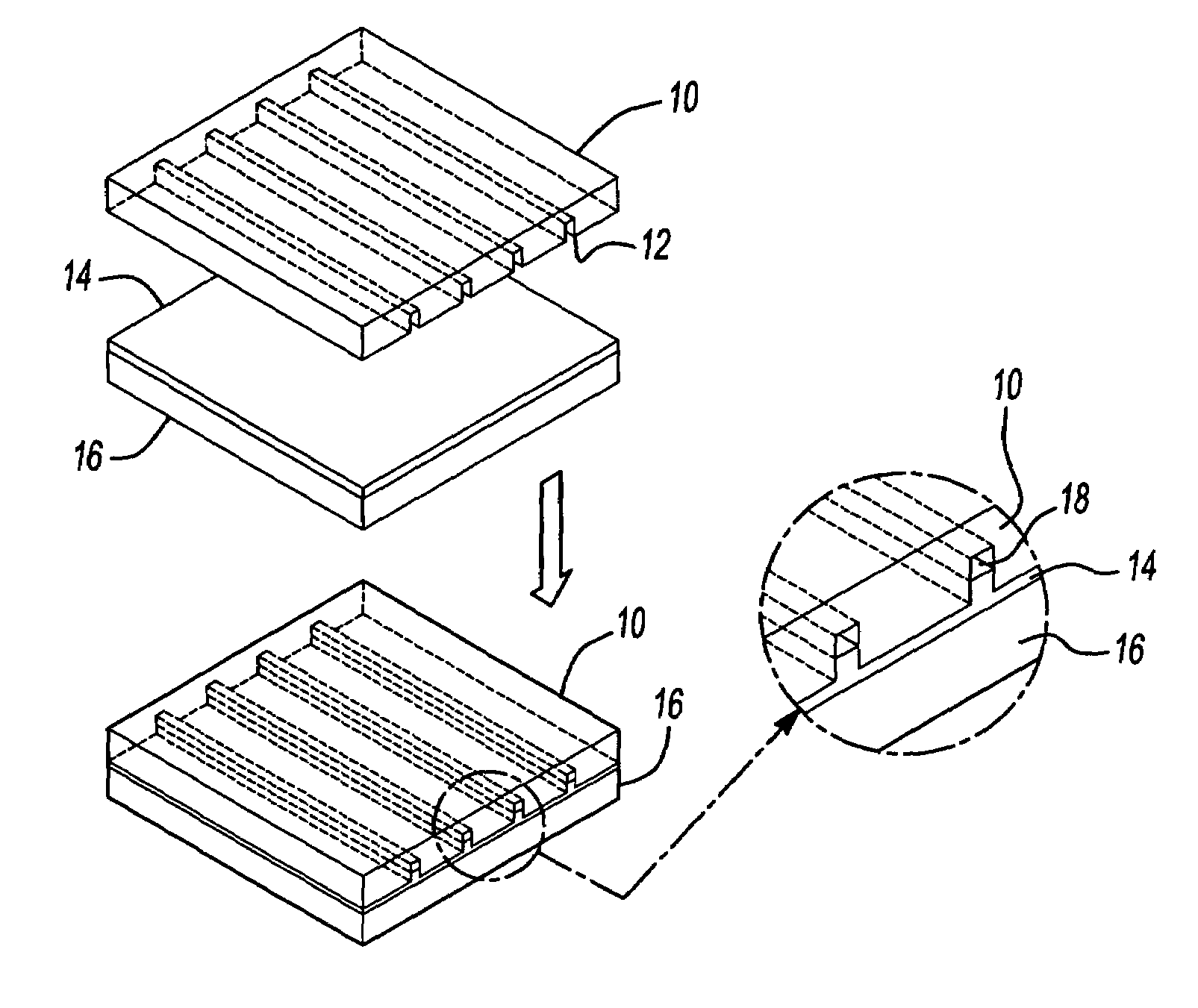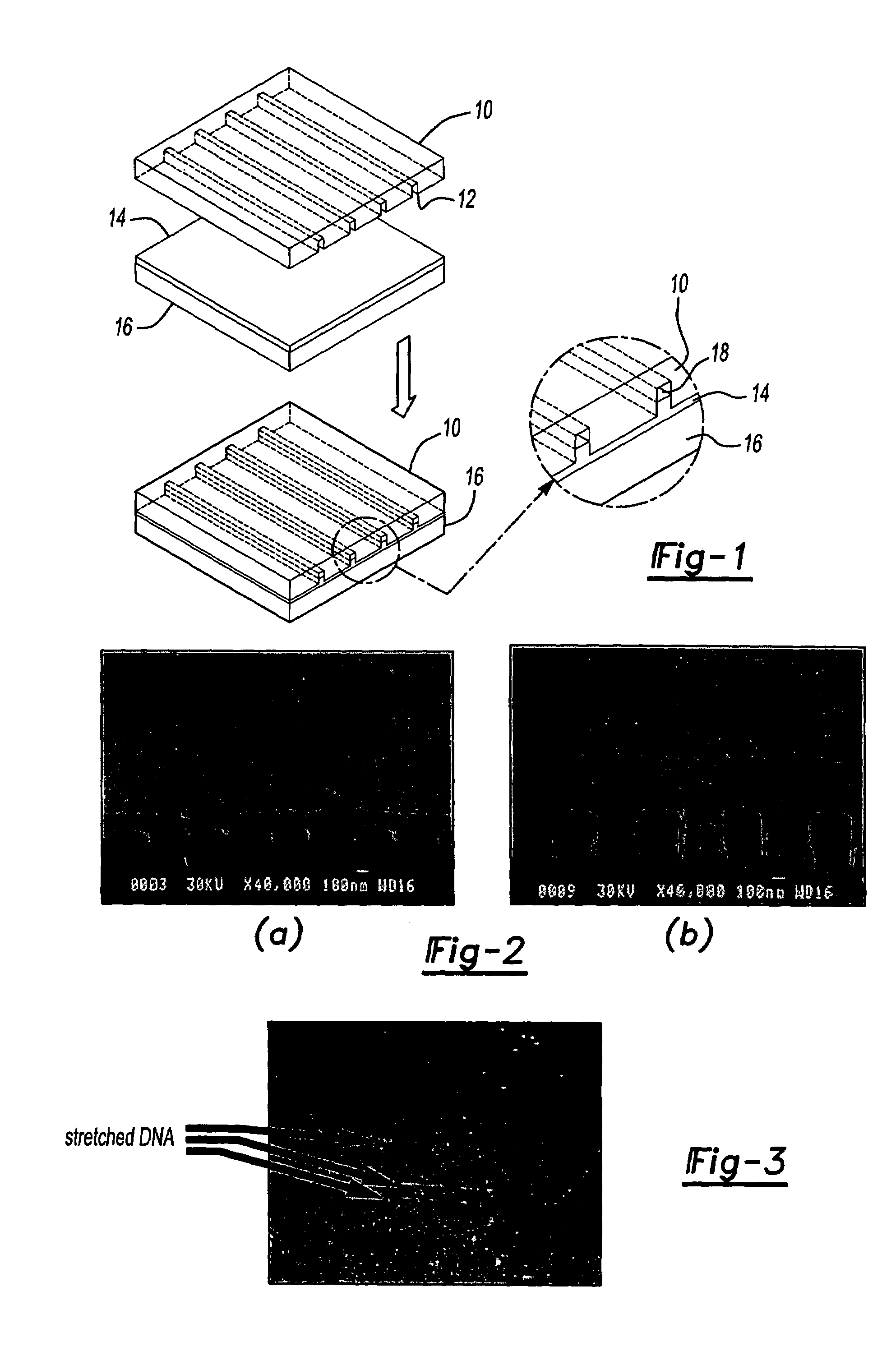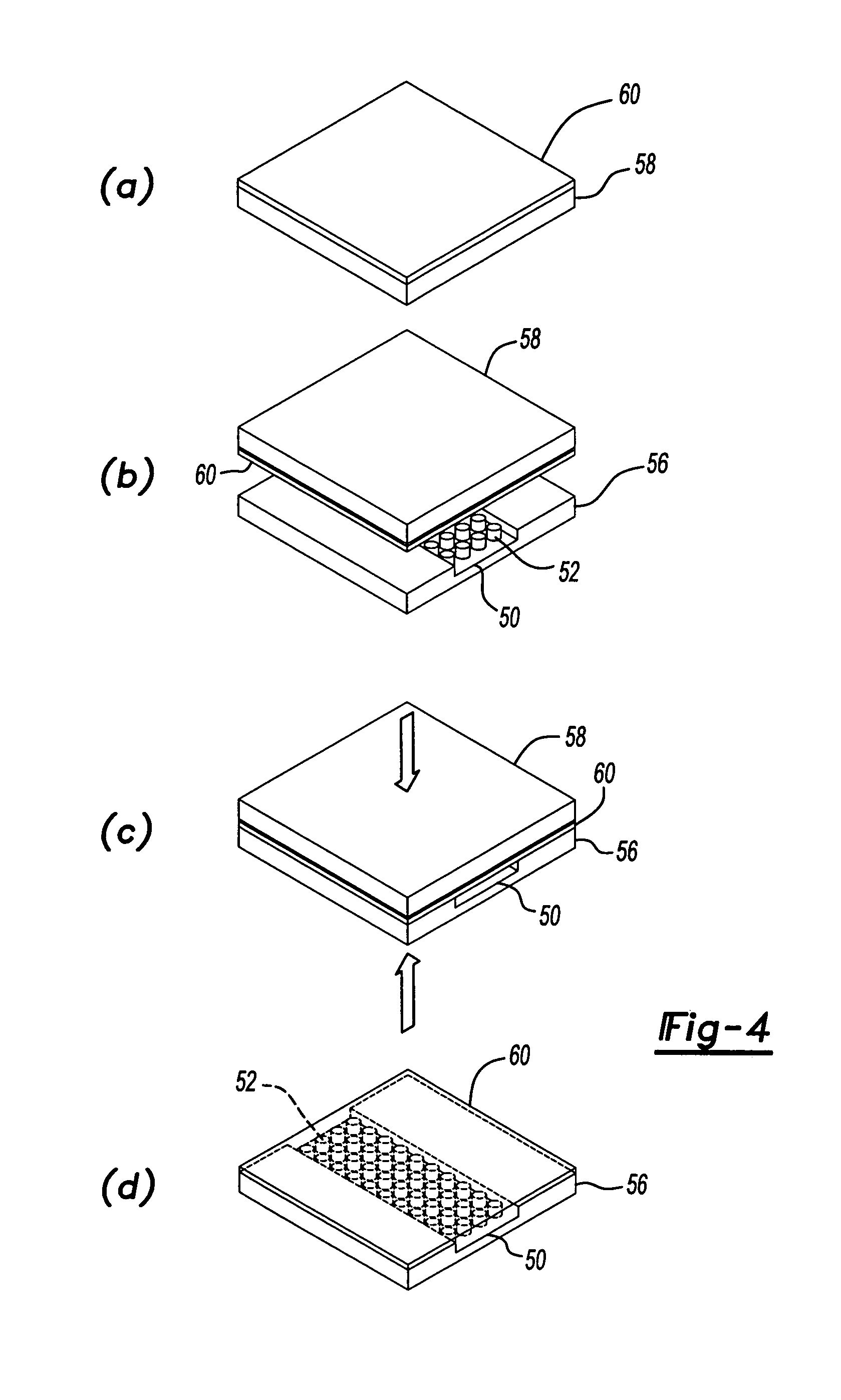Method of forming nanofluidic channels
a nanofluidic channel and nanofluidic technology, applied in the direction of fluid speed measurement, material analysis, individual molecule manipulation, etc., can solve the problems of limited process to commercial applications, partial or complete filling of channels, and many technological challenges, so as to facilitate low-cost and high-volume manufacturing of nanofluidic channels
- Summary
- Abstract
- Description
- Claims
- Application Information
AI Technical Summary
Benefits of technology
Problems solved by technology
Method used
Image
Examples
Embodiment Construction
[0019]The following description of the preferred embodiment(s) is merely exemplary in nature and is in no way intended to limit the invention, its application, or uses.
[0020]According to the teachings of the present invention, a method is provided that includes directly forming fluidic channels by a 2-step nanoimprinting technique. With particular reference to FIG. 1, which illustrates a schematic of the preferred method, a nano-channel template 10 with nanoscale trenches 12 is fabricated by a first nanoimprinting and reactive ion etching (RIE) process in oxide. Then nano-channel template 10 is used as a mold (preferably without surfactant coating) to imprint into a thin polymer layer 14 on a substrate 16 through a second nanoimprinting process. A thickness of polymer layer 14 is carefully chosen such that polymer layer 14 will not completely fill nanoscale trenches 12 of nano-channel template 10. The portions of nanoscale trenches 12 of nano-channel template 10 that remain unfilled...
PUM
| Property | Measurement | Unit |
|---|---|---|
| persistence length | aaaaa | aaaaa |
| size | aaaaa | aaaaa |
| width | aaaaa | aaaaa |
Abstract
Description
Claims
Application Information
 Login to View More
Login to View More - R&D
- Intellectual Property
- Life Sciences
- Materials
- Tech Scout
- Unparalleled Data Quality
- Higher Quality Content
- 60% Fewer Hallucinations
Browse by: Latest US Patents, China's latest patents, Technical Efficacy Thesaurus, Application Domain, Technology Topic, Popular Technical Reports.
© 2025 PatSnap. All rights reserved.Legal|Privacy policy|Modern Slavery Act Transparency Statement|Sitemap|About US| Contact US: help@patsnap.com



